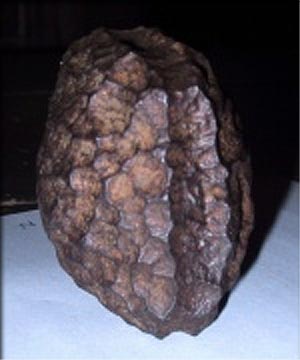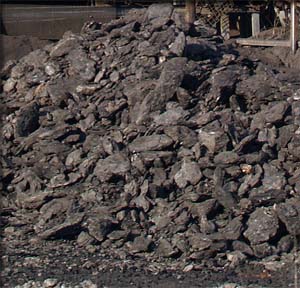pop up description layer
HOME
Cryptozoology UFO Mysteries Aviation Space & Time Dinosaurs Geology Archaeology Exploration 7 Wonders Surprising Science Troubled History Library Laboratory Attic Theater Store Index/Site Map Cyclorama
Search the Site: |
|
The Saltzburg Cube
The term cube is somewhat misleading. People often picture the object as a square box with flat edges that looks like it came out of a machine. It doesn't look like this at all. The object, which is about 2 ½ inches (67mm) wide and high and 2 inches (47mm) thick is not a rectangular box. It is rounded with a surface of bumps and pits. Around the edge of its smallest dimension runs an indentation, or groove, which is the object's most notable feature. Even though it is not a cube, the object does look like it might have been artificially made and if so, it presents a conundrum. The chunk of coal it was taken from came from a seam of Tertiary lignite from a quarry at Wolfsegg am Hausruck, Austria, that was laid more than 60 million years ago when the dinosaurs ruled the earth. The coal started as peat (decaying plant matter that was buried and compressed by geologic forces eventually turning it into rock). How in the world would a man-made object wind up buried in stone many millions of years before the rise of modern man? Meteorite? Reidl turned the object over to Isidor Braun, the foundry's owner. Braun's son then took the artifact to the Heimathaus Museum in Vöcklabruck to have an expert examine it. The next year, mining engineer Adolf Gurlt, a professor of geology at the University of Bonn, took a close look at it. He noted that it was coated with a thin layer of rust, was made of iron, and had a specific gravity of 7.75. Finally, he pronounced it a meteorite. But what was a meteorite from space doing in a chunk of coal? Researchers at this point found this so strange that articles about the object appeared in Nature, a British scientific magazine, in November, 1886, and the next year in L'Astronomie, a French astronomy journal.
Gurlt's conclusion that the object was a meteorite was unchallenged for many years until 1966 when the Vienna Naturhistorisches Museum used electron beam microanalysis to figure out exactly what the object was made of. The analysis showed most of the "cube" was iron. This does make sense with the extraterrestrial origin theory as about 5% of all meteorites are made of iron. However, those iron meteorites always come with other substances mixed in: usually traces of nickel, chromium or cobalt. The lack of these in the Saltzburg Cube make it seem unlikely that it came from space. Out of Place Artifact? So where did it come from? Many people have suggested that this chunk of iron is an out-of-place artifact (OOPArt) perhaps left by ancient astronauts from a different planet when they visited earth millions of years ago. However, it is likely there is a more pedestrian explanation. When the cube was examined at the Vienna Naturhistorisches Museum, two of the scientists analyzing, Dr. Gero Kurat of the museum and Dr. Rudolf Grill of the Federal Geological Office in Vienna, suggested it was simply a piece of cast iron. In a later examination in 1973 by Hubert Mattlianer, it was concluded that the cube had been cast using the cire perdue (lost wax) method. Ballast? After his examination of the object Grill also observed that such chunks of metal were often used as ballast for early mining machinery. Is it possible that somehow during an early mining effort that a peice of the machine's ballast became wedged in a seam of coal? Without the chunk of coal it came out of (which was not preserved), we only have Reidl's word that the object was found fully contained in the rock. Suppose he was lying, or perhaps more likely, he was simply mistaken? If he was, then the mystery just seems to evaporate. Where is the Saltzburg Cube today? Despite rumors to the contrary suggesting it disappeared, it still resides at the Heimathaus Museum in Vöcklabruck, Austria. It is a little smaller than when it was first found because researchers have taken some pieces out of it, but it is still with us. Perhaps the Saltzburg Cube mystery is not really a mystery at all. Copyright Lee Krystek 2016. All Rights Reserved. |
|
Related Links |
|
|





